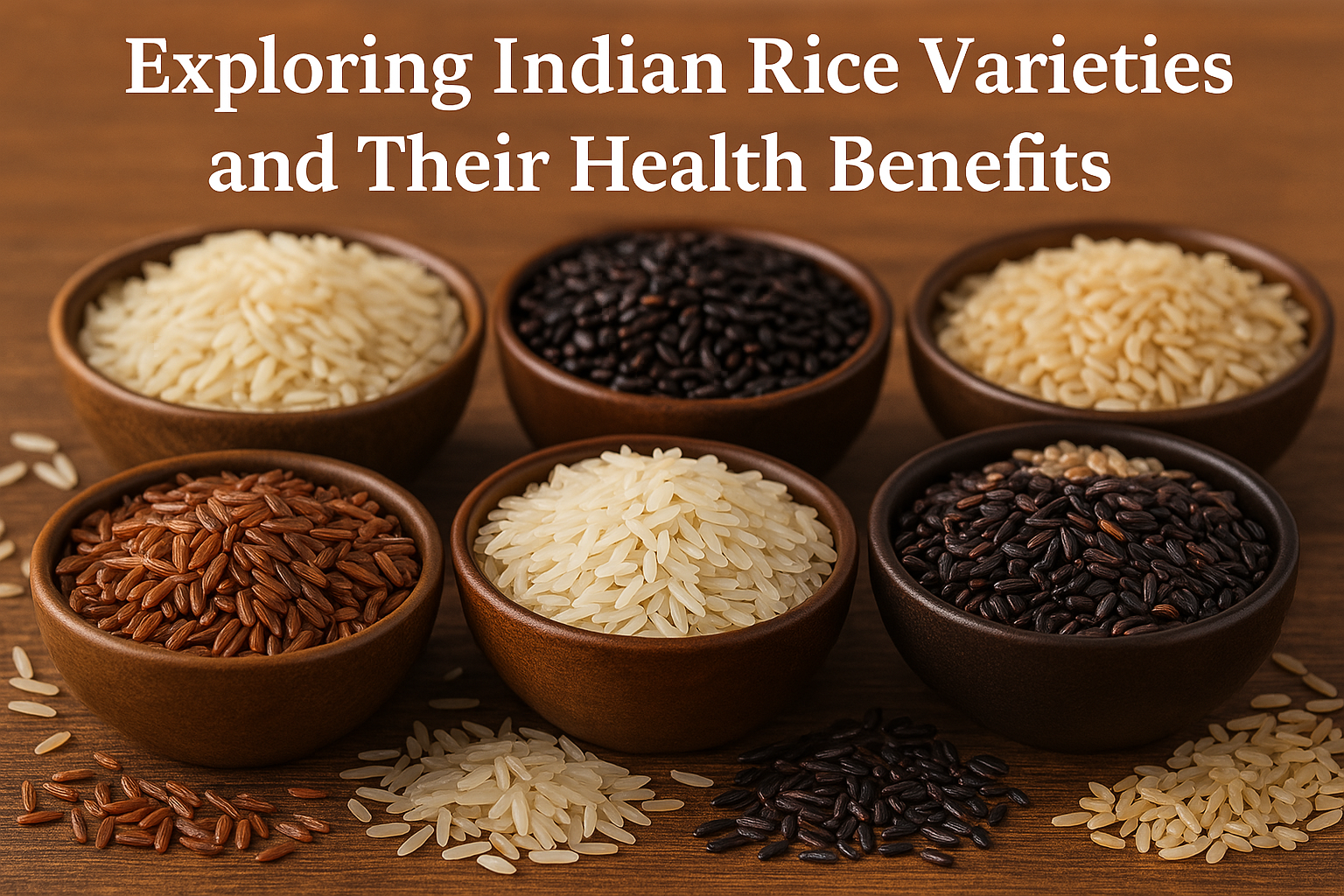India is not just a land of spices and festivals but also a rich treasury of rice varieties. From the snow-fed Himalayan valleys to the sun-soaked southern deltas, rice has been a staple grain in Indian households for centuries. What sets India apart is the sheer diversity of rice grown—over 40,000 varieties! Each variety comes with its own taste, texture, aroma, and health benefits. Hashtag magazine delves into some of the most popular Indian rice varieties and understands how they contribute to your well-being.
1. Basmati Rice
Region: North India (Punjab, Haryana, Uttarakhand)
Features: Long-grain, aromatic, fluffy when cooked
Health Benefits:
- Low in fat and gluten-free
- Contains all eight essential amino acids
- Has a low to medium glycemic index
- Rich in fiber (especially brown basmati)
Best Used For: Biryani, pulao, jeera rice, festive meals
2. Sona Masoori
Region: Andhra Pradesh, Telangana, Karnataka
Features: Medium-grain, lightweight, less polished than basmati
Health Benefits:
- Lower starch content
- Easier to digest
- Suitable for weight loss and diabetic-friendly diets
Best Used For: Daily meals, lemon rice, pongal, plain rice
3. Indrayani Rice
Region: Maharashtra
Features: Aromatic, sticky texture when cooked
Health Benefits:
- Contains antioxidants
- Good source of vitamins and minerals
- Supports healthy gut flora
Best Used For: Khichdi, dal rice, curd rice
4. Gobindobhog Rice
Region: West Bengal
Features: Short-grain, aromatic, sticky
Health Benefits:
- Rich in energy-giving carbohydrates
- Easily digestible
- Enhances satiety and comfort
Best Used For: Bengali desserts, khichuri, payesh
5. Matta Rice (Rosematta/Red Parboiled Rice)
Region: Kerala
Features: Red-tinted rice, coarse, earthy flavor
Health Benefits:
- High in fiber due to bran retention
- Rich in magnesium and calcium
- Promotes heart health and aids digestion
Best Used For: Kerala meals, kanji (rice porridge)
6. Black Rice (Chak Hao)
Region: Manipur and Northeast India
Features: Dark purple-black color, chewy texture
Health Benefits:
- High in antioxidants (especially anthocyanin)
- Anti-inflammatory properties
- Aids in detoxification and brain health
Best Used For: Pudding, salads, stir-fries, special occasions
7. Brown Rice
Region: Grown all over India
Features: Whole grain, chewy texture
Health Benefits:
- High fiber content supports weight loss
- Stabilizes blood sugar levels
- Reduces bad cholesterol (LDL)
Best Used For: Health-conscious meals, grain bowls, pilafs
8. Red Rice
Region: Kerala, Karnataka, Tamil Nadu
Features: Reddish hue from anthocyanins, nutty flavor
Health Benefits:
- Good for cardiovascular health
- Improves oxygen absorption
- Promotes satiety and lowers bad cholesterol
Best Used For: Traditional South Indian meals, power-packed lunches
9. Bamboo Rice
Region: Tribal regions of Kerala, Tamil Nadu
Features: Collected from mature bamboo flowers, seasonal and rare
Health Benefits:
- High protein content
- Controls joint pain and arthritis
- Has low glycemic index—suitable for diabetics
Best Used For: Unique rice dishes, porridge, desserts
10. Kalajeera Rice (Baby Basmati)
Region: Odisha and West Bengal
Features: Small-grain, mildly aromatic
Health Benefits:
- Aids digestion
- Known for its calming and therapeutic properties
- Promotes longevity and good sleep
Best Used For: Pulao, prasad, daily meals
Health Tips While Choosing Rice:
- Polished vs. Unpolished: Choose unpolished or semi-polished rice for better fiber content and nutrients.
- Portion Control: Rice can be part of a healthy diet when eaten in moderation.
- Pairing with Pulses: Always combine rice with protein-rich dals or legumes to create a balanced meal.
Conclusion
Rice is more than just a grain in India—it’s culture, tradition, and nourishment in every bite. With the right variety suited to your health goals and taste preferences, rice can be both comforting and beneficial. Whether you’re looking for a diabetes-friendly option, a heart-healthy choice, or just a delicious meal, there’s an Indian rice variety waiting for you.
So the next time you’re picking rice at the grocery store, think beyond just basmati—think local, think colourful, and think healthy!
































